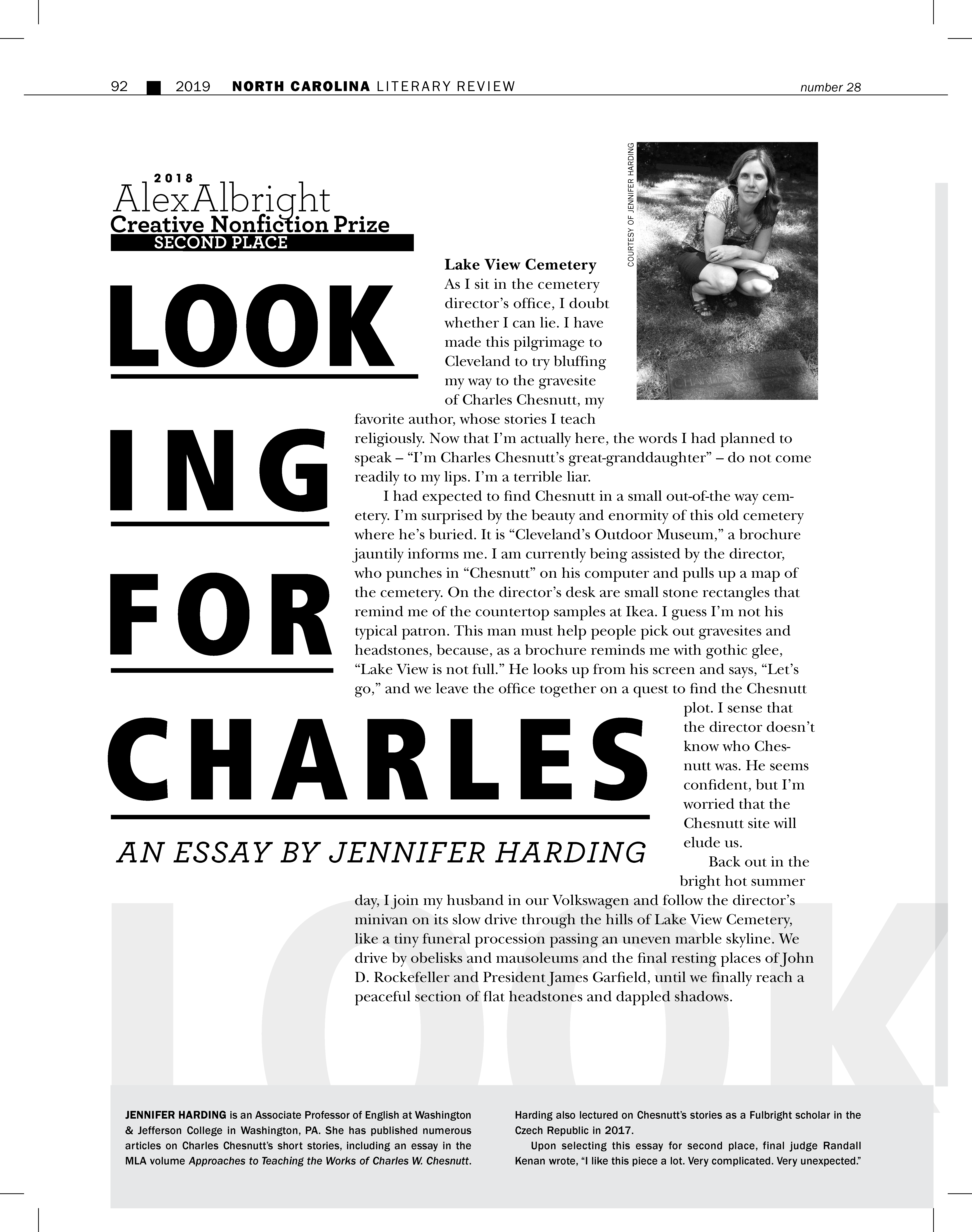Friday from the Archives: “Looking for Charles” the 2018 Albright Prize Second Place essay by Jennifer Harding in NCLR 28 (2019)
A new biography of NC writer Charles Waddell Chesnutt has just been released, to much acclaim. We have published a lot about Chesnutt over the years, including scholarly criticism about his full length novels and short stories, and how teachers are using his work in K-12 classrooms.
Jennifer Harding placed second in our 2018 Alex Albright Creative Nonfiction Prize Contest with her essay, “Looking for Charles.” She opens with “I have made this pilgrimage to Cleveland to try bluffing my way to the gravesite of Charles Chesnutt, my favorite author, whose stories I teach religiously. Now that I’m actually here, the words I had planned to speak – “I’m Charles Chesnutt’s great-granddaughter” – do not come readily to my lips. I’m a terrible liar.”
Harding describes visiting both Chesnutt’s final resting place and also looking for his Ohio home, which has been demolished. She writes, “I am in the habit of looking into the past to find Charles Chesnutt. He was in the habit of looking to the future to imagine us. In 1905 Chesnutt wrote, “Looking down the vista of time I see an epoch in our nation’s history, not in my time or yours, but in the not distant future, when there shall be in the United States but one people . . . when men will be esteemed and honored for their character and talents” (Ferguson 93).”
The new biography talks in part about Chesnutt’s prowess within the white literary circles of his day. Harding wrote about that, too: “On a national stage, Chesnutt’s status was evident when he was invited to attend Mark Twain’s seventieth birthday party in New York City, along with Andrew Carnegie, William Dean Howells, and Mary E. Wilkins Freeman, among many others. In a picture taken at the party, Chesnutt sits in his tuxedo – dignified, relaxed – at a table with white luminaries from the New England literary scene. As these examples show, when other blacks were excluded, Chesnutt was the exception. If someone unfamiliar with Chesnutt looks at old photographs of the Rowfant Club or Mark Twain’s party, though, it is not obvious that there is a black man in the picture. But Chesnutt’s status as a black man was never in question. He didn’t pass; he simply stepped back and forth across the color line.”
Read the essay on Gale Cengage or order the NCLR 2019 issue.
